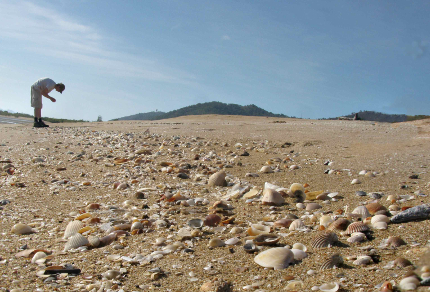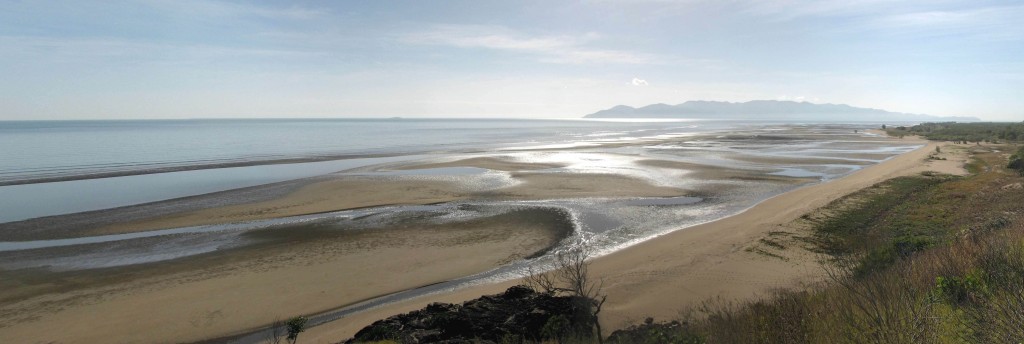
Shelley Beach (© Vilis Nams)
With the cool air of an early winter morning wafting over us, Vilis, Janis, and I left the Kia in the Bald Rock car park in the Townsville Town Common Conservation Park and hiked south around the western end of the Many Peaks Range, and then north toward Shelley Beach. Heavy dew strung silver beads on spider webs, leaves, and grass flower plumes still caught in shade less than an hour after sunrise. Following an old road, we skirted a muddy, mangrove-bordered creek in which saltwater crocodiles are sometimes seen, although we observed none.

Vilis on Sand Plain en route to Shelley Beach (© Magi Nams)
For a time, we left the road and bushwalked across a drying sand plain decorated with the tracks of dingoes and macropods, one of the latter having bounded in huge leaps across the sand. After we rejoined the track, we hiked through meadows and open savannah woodland comprised of spindly, twisted poplar gums over a dense, tall understory of grasses and herbs. The trail itself had been recently mowed, allowing us easy passage, although we dodged numerous strands of spider silk and a half-metre-diameter web hung across the path, all shimmering with dew as though gem-studded strings of beads or a giantess’s brooche.

Janis and I with an Anthill or Termite Mound (© Vilis Nams)
Numerous pale grey anthills (or termite mounds; we weren’t sure which) protruded upward through the grass like conical piles of hardened cement. After tapping on the compacted exterior of one, we speculated that the ants (or termites) must construct or remodel their shelters during the Wet, when the substrate would be maleable. The hardened outer surface no doubt provides a protective shell that conserves moisture within the anthill, creating a relatively climate-controlled home for the insect colony.
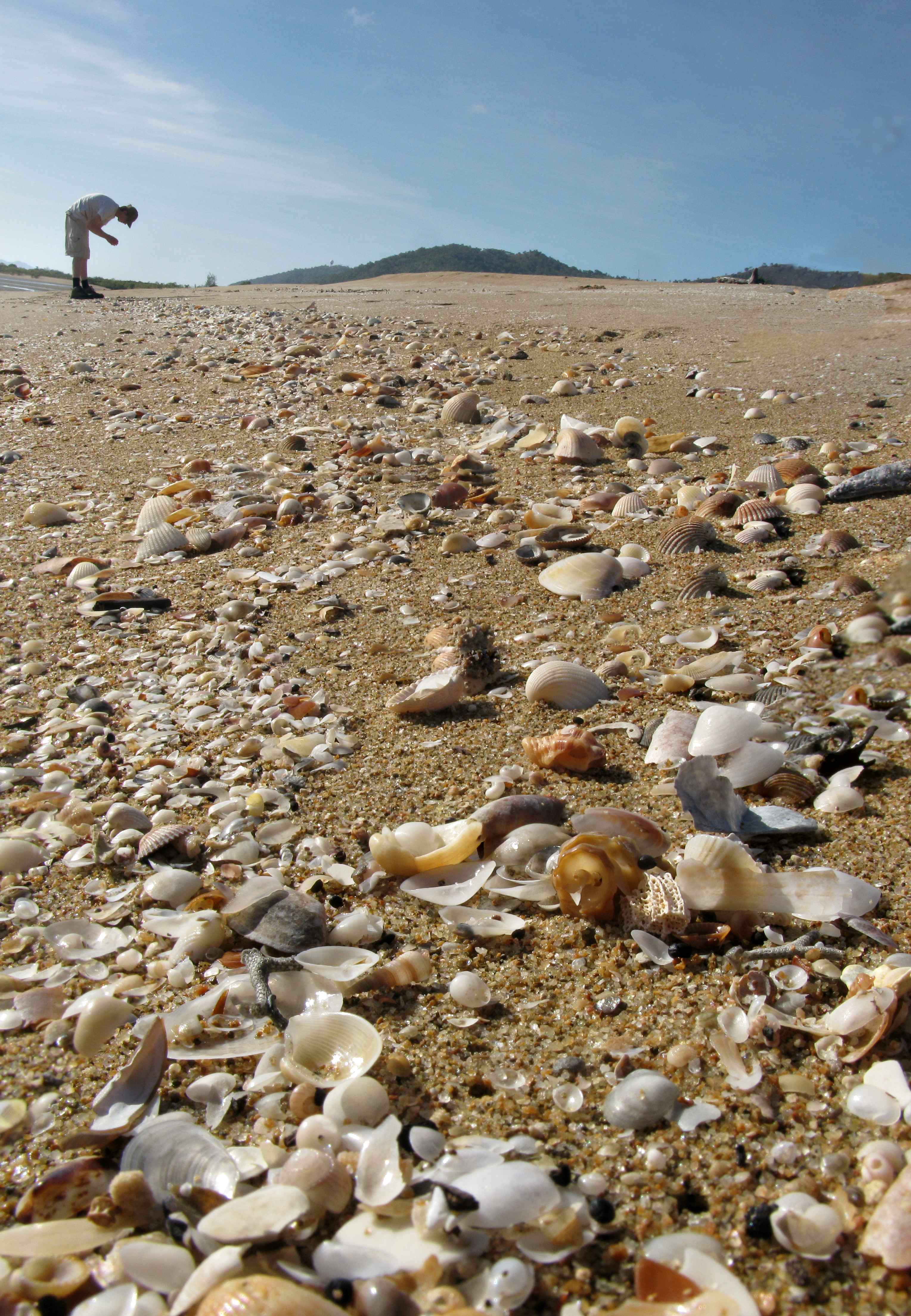
Janis on Shelley Beach (© Vilis Nams)
On reaching Shelley Beach, we scrambled up onto a headland and looked out over a vast expanse of Pacific Ocean interrupted by scattered, small islands and the haze-covered length of Magnetic Island located 10 kilometres off the coast from Townsville. A Brahminy kite winged along the beach, its white head and chestnut body rich against the backdrop of sand and water.
At beach level again, Janis checked out wave-washed seashells while I birded and Vilis experimented with panoramic photography. Welcome swallows, tree martins, and fairy martins swooped and climbed in graceful, darting passes over a bed of beach pea and herbs above the sand ridge formed by the tides.
Under the bald sun, even mid-morning temperatures felt too hot, so we hiked the old road back to Bald Rock, pausing to enjoy a soaring wedge-tailed eagle and a flamboyantly gorgeous male red-backed fairy-wren in all his tiny, black and red splendor. With the advance of sunlight onto the dewy, shaded meadows and woodland through which we’d earlier hiked, butterflies – blue tigers, swamp tigers, lesser wanderers, clear-winged swallowtails, and a blue argus – seemed to be everywhere, floating above the ground and flitting from plant stalk to plant stalk.
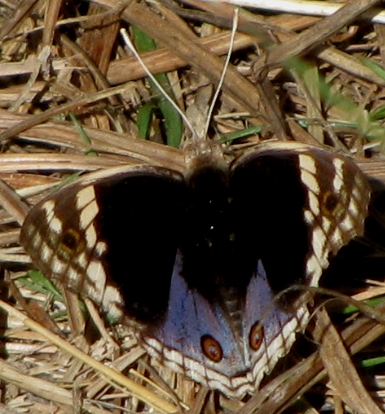
Male Blue Argus (© Vilis Nams)
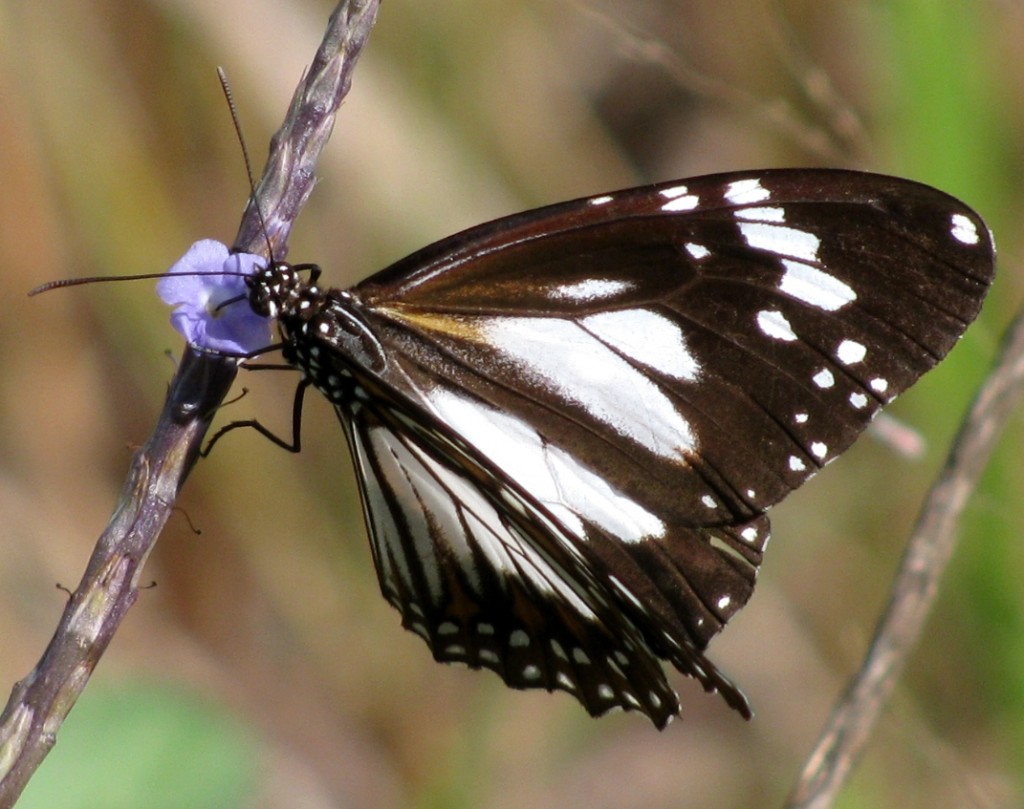
Swamp Tiger (© Vilis Nams)
On our return drive through the Common, we spotted hundreds of magpie geese dabbling in the wetland and raising long black necks up out of dense beds of grasses and reeds. From a roadside stop just beyond the Common entrance, we had a spectacular view of egrets, ibises, spoonbills, and a black-necked stork stalking or sweeping prey from a pond, with the bulk of Castle Hill rearing up in the background. The scene, with its white birds, expanses of still-green grasses, and baby-blue sky tufted with clouds, exuded a sense of purity, as though exemplifying harmony between a tropical city and its adjoining wild spaces.

Castle Hill Overlooking the Common. (© Magi Nams) Note black-necked stork, Australian white ibises, royal spoonbills, great egrets.
Today’s birds: Australian white ibises, Australian brush-turkey, pheasant coucals, black-necked storks, masked lapwings, rainbow bee-eaters, sacred kingfishers, silver-crowned friarbirds, brown honeyeaters, bar-shouldered dove, peaceful doves, white-bellied cuckoo-shrike, rainbow lorikeets, laughing kookaburras, white-throated honeyeater, white-breasted woodswallows, Brahminy kite, fairy martins, tree martins, Torresian crow, red-backed fairy-wrens, wedge-tailed eagle, royal spoonbills, great egrets, intermediate egrets. Also wallabies. Evening, southern boobook.

